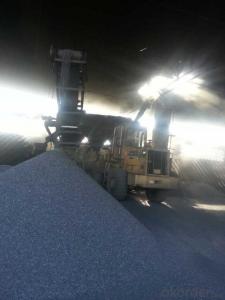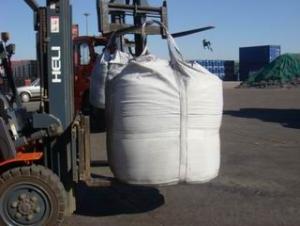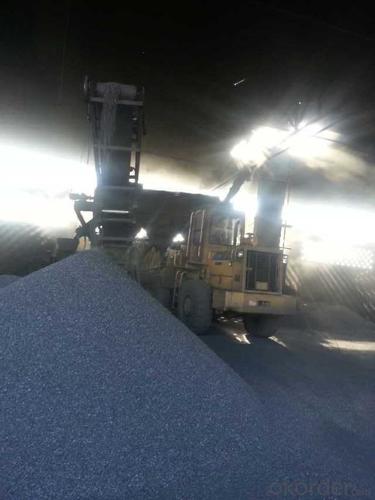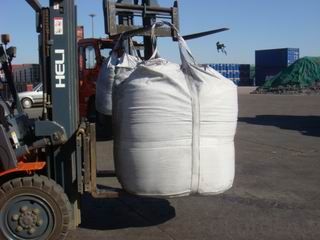FC 90% Calcined Anthracite
- Loading Port:
- China Main Port
- Payment Terms:
- TT OR LC
- Min Order Qty:
- -
- Supply Capability:
- -
OKorder Service Pledge
Quality Product, Order Online Tracking, Timely Delivery
OKorder Financial Service
Credit Rating, Credit Services, Credit Purchasing
You Might Also Like
Calcined Anthracite is produced using the best Anthracite-Taixi Anthracite wich is with low S and P, It is widely used in steel making and casting as carbon additive, and it is also widely used in Chemical, carbon materials production and some other fields.
General Specification of Calcined Anthracite:
PARAMETER UNIT GUARANTEE VALUE | |||||
F.C.% | 95MIN | 94MIN | 93MIN | 92MIN | 90MIN |
ASH % | 4MAX | 5MAX | 6MAX | 7MAX | 8MAX |
V.M.% | 1 MAX | 1MAX | 1.5MAX | 1.5MAX | 1.5MAX |
SULFUR % | 0.5MAX | 0.5MAX | 0.5MAX | 0.5MAX | 0.5MAX |
MOISTURE % | 0.5MAX | 0.5MAX | 0.5MAX | 0.5MAX | 0.5MAX |
Size can be adjusted based on buyer's request.
Pictures of Calcined Anthracite:
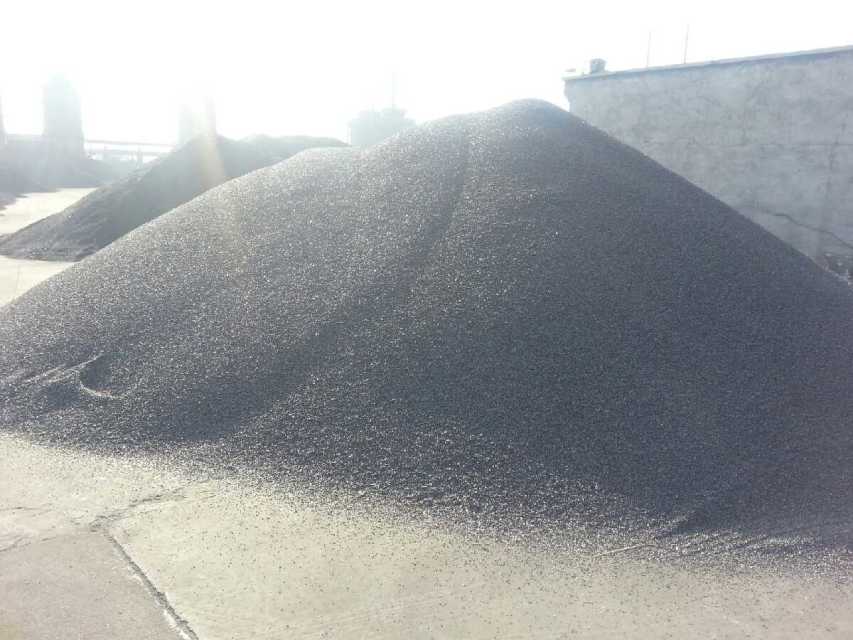
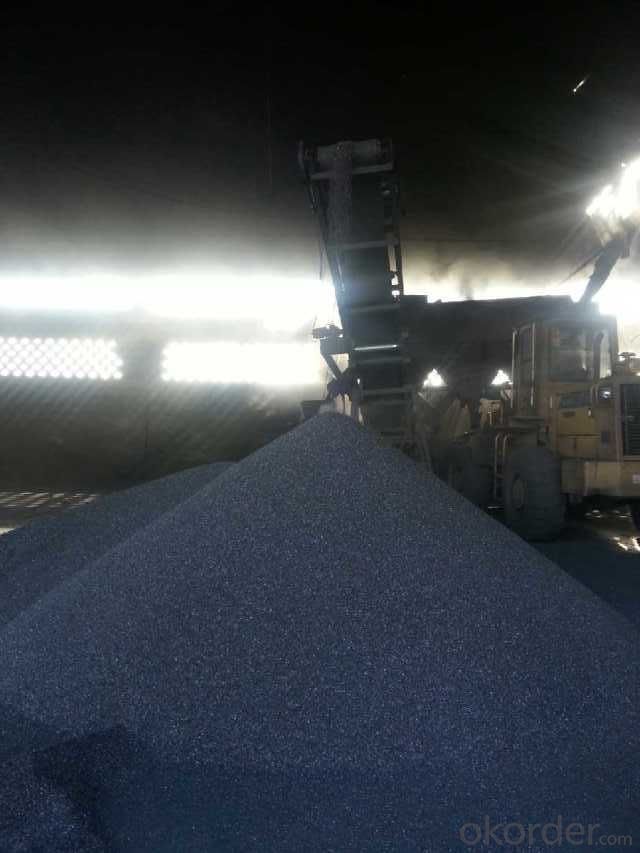

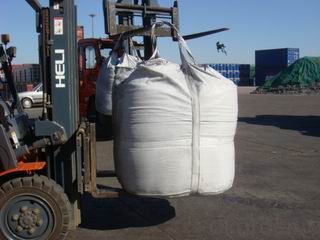
The package will be adjusted based on buyer's request.
- Q: What are the 3K, 12K, UD, etc. in the appearance requirements of the carbon fiber bicycle? What's the difference?
- 3K and "12K" refer to carbon fiber woven fabrics. 3K 12K cloth cloth texture is fine, coarse texture.UD is not imitation carbon fiber, refers to the polyethylene fiber woven fabric, the strength is lower than the carbon fiber, but the density is smaller than the carbon fiber, is often used to make bullet proof material.Carbon fiber and polyethylene fiber belong to high performance fiber.Advisory 181150695.
- Q: What are the benefits of carbon fiber?
- Carbon fiber (carbon fiber, referred to as CF) is a new kind of fiber material with high strength and high modulus fiber with carbon content of more than 95%. It is a flaky graphite, microcrystalline and other organic fibers stacked along the axial direction of the fiber, obtained by carbonization and graphitization of microcrystalline graphite material.
- Q: What are the effects of carbon emissions on agriculture?
- Carbon emissions have significant effects on agriculture, primarily through climate change. Increased levels of carbon dioxide in the atmosphere lead to rising temperatures, changes in precipitation patterns, and more frequent extreme weather events. These changes disrupt agricultural systems by altering growing seasons, reducing crop yields, and increasing the prevalence of pests and diseases. Additionally, carbon emissions contribute to the acidification of oceans, which can harm marine ecosystems and impact fisheries, further affecting food production. Overall, carbon emissions pose a serious threat to agricultural productivity and food security.
- Q: What are the different types of carbon-based polymers?
- There are several different types of carbon-based polymers, each with its own unique properties and applications. Some of the most common types include: 1. Polyethylene (PE): This is one of the most widely used polymers and is known for its high strength and chemical resistance. It is commonly used in packaging materials, plastic bottles, and pipes. 2. Polypropylene (PP): PP is similar to PE but with a higher melting point and better resistance to heat. It is commonly used in automotive parts, textiles, and food packaging. 3. Polystyrene (PS): PS is a lightweight and rigid polymer that is commonly used in packaging materials, disposable utensils, and insulation. 4. Polyvinyl chloride (PVC): PVC is a versatile polymer that can be rigid or flexible depending on the additives used. It is commonly used in pipes, electrical insulation, and flooring. 5. Polyethylene terephthalate (PET): PET is a strong and lightweight polymer that is commonly used in beverage bottles, food containers, and synthetic fibers. 6. Polyurethane (PU): PU is a flexible and durable polymer that is commonly used in foams, coatings, adhesives, and textiles. 7. Polycarbonate (PC): PC is a strong and transparent polymer that is commonly used in eyeglass lenses, safety goggles, and electronic components. 8. Phenolic resins: These polymers are known for their excellent heat resistance and are commonly used in coatings, adhesives, and electrical components. These are just a few examples of the many carbon-based polymers that exist. Each type has its own specific properties and applications, making them suitable for a wide range of industries and products.
- Q: How is carbon used in the production of paints and coatings?
- Carbon is used in the production of paints and coatings in several ways. Firstly, carbon black is a common pigment used in paints and coatings to provide color and opacity. It is made by burning natural gas or oil in a controlled environment, resulting in fine particles of carbon. Carbon black enhances the color intensity and durability of the paint or coating, as well as improves its resistance to UV light and weathering. Additionally, carbon-based compounds, such as resins and polymers, are used as binders in the formulation of paints and coatings. These binders help hold the pigment particles together and adhere them to the surface being painted or coated. Carbon-based binders are known for their excellent adhesion properties, which contribute to the durability and longevity of the paint or coating. Furthermore, carbon nanotubes are increasingly being used in the production of high-performance paints and coatings. These nanotubes, which are cylindrical carbon structures, have exceptional mechanical, thermal, and electrical properties. They can be incorporated into paint or coating formulations to enhance their strength, conductivity, and resistance to corrosion or abrasion. In summary, carbon plays a crucial role in the production of paints and coatings. It is used as a pigment to provide color and opacity, as binders to hold the pigment particles together, and as carbon nanotubes to enhance the performance and functionality of the final product.
- Q: How does carbon impact the prevalence of avalanches?
- Carbon has a significant impact on the prevalence of avalanches. The increase in carbon emissions and subsequent global warming is leading to changes in snowpack stability, which in turn affects avalanche frequency and severity. As temperatures rise, snowfall patterns are becoming more unpredictable, with more frequent freeze-thaw cycles. This creates a weaker snowpack as the snow becomes less cohesive and more prone to sliding. Additionally, warmer temperatures cause more rain to fall instead of snow, further destabilizing the snowpack by adding weight and reducing its strength. These changes in snowpack stability increase the likelihood of avalanches occurring. Moreover, climate change also affects the timing and duration of snow accumulation. With warmer temperatures, snow melt occurs earlier, which can lead to a reduced snowpack during the peak avalanche season. This can result in a higher likelihood of triggering avalanches, as there may be a smaller buffer of stable snow to support the weight and stress of additional snowfall or human activity. Furthermore, carbon-induced climate change can alter the frequency and intensity of extreme weather events, such as heavy snowfalls or rainstorms. These events can cause rapid and significant changes in snowpack conditions, leading to an increased risk of avalanches. In summary, the impact of carbon on the prevalence of avalanches is significant. The warming climate affects snowpack stability, timing and duration of snow accumulation, and the frequency of extreme weather events, all of which contribute to an increased risk and prevalence of avalanches.
- Q: DNF new advanced furnace rock carbon reinforcement +10 50 powder weapons, the upper 11 probability of success is how much, how many advanced furnace rock carbon?
- Dungeon Fighter Online conducted an update in August 3rd, and this update presents the warriors who have been looking forward to the sea Warriors 2 signing up for gift activities and advanced furnace rock carbon. Reinforcement has always been a constant problem for DNF, where players always want their equipment to be much higher, but the roads behind +10 are difficult to walk and will crash as soon as they are equipped with care. And for the pursuit of the highest quality of the players will be a big blow ah, so the players would like to do everything possible to achieve the purpose of strengthening. Among them, the strengthening of the pad installed has long been common, and we have often debated whether it has any use, but now a real can enhance the strengthening of the probability of the emergence of things, that is, advanced carbon! Next, Xiao Bian will analyze how much this 110% chance increases and how best to play the best role of this carbon. As we all know, advanced carbon can only strengthen more than +10 of equipment (including +10), in that case, let us first look at the original equipment reinforcement probability. Grade +10~+11, +11~+12, +12~+13, +13~+14, +15~+16, +14~+15, chance 33.9%, 28%, 20.7%, 17.3%, 13.6%, 10.1%, 10 strong 11 as an example, the original probability of 33.9%*110% is 37.29%.
- Q: What are the consequences of increased carbon emissions on human migration patterns?
- Increased carbon emissions have significant consequences on human migration patterns. One of the most prominent effects is the exacerbation of climate change, leading to more frequent and intense natural disasters such as hurricanes, floods, and droughts. These extreme weather events can devastate communities, destroy infrastructure, and disrupt livelihoods, forcing people to migrate in search of safer and more stable environments. Rising sea levels, another consequence of carbon emissions, pose a significant threat to coastal regions and island nations. As sea levels continue to rise, low-lying areas become more prone to flooding and coastal erosion, making them uninhabitable. This displacement of populations, commonly referred to as climate refugees, can lead to mass migrations, putting additional strain on resources and infrastructure in destination areas. Moreover, carbon emissions contribute to changes in temperature and precipitation patterns, which can have a profound impact on agricultural activities. Shifts in growing seasons, increased frequency of droughts or floods, and the spread of pests and diseases can negatively affect crop yields and food security. This disruption in the availability of food and resources can push vulnerable populations to migrate in search of better livelihoods and food sources. The consequences of increased carbon emissions on human migration patterns also extend to health issues. Climate change can lead to the spread of diseases, such as malaria and dengue fever, as well as worsen air pollution, exacerbating respiratory problems. These health risks can force individuals and communities to relocate to areas with better healthcare infrastructure and conditions. In summary, increased carbon emissions have wide-ranging consequences on human migration patterns. The intensification of climate change, rising sea levels, disruptions to agriculture, and health risks all contribute to the displacement of populations, creating a need for individuals and communities to seek safer and more stable environments. Addressing carbon emissions and mitigating climate change is essential to minimize the negative impacts on human migration and ensure a sustainable future.
- Q: What's the difference between an alkaline cell and a carbon cell?
- 3. Alkaline batteries, also called alkaline dry cells, are suitable for large capacity and long time use. The internal resistance of the battery is low, so the current produced is larger than that of the general zinc manganese battery, while the environmental protection type mercury content is only 0.025%, and no recycling is needed. Based on his environmental protection, and the current characteristics of large, so now alkaline battery more.4. In the final analysis, the essential difference between a carbon cell and an alkaline cell is the internal material. In short, carbon battery consists of carbon, zinc skin composition, but its internal cadmium and mercury, is not conducive to environmental protection, but it is cheap, so there is a space for one person in the market, and the alkaline battery no pollution of heavy metal ions, high current, conducive to environmental protection, is the future development direction of the battery!
- Q: What are the impacts of carbon emissions on the stability of islands?
- Carbon emissions have significant impacts on the stability of islands. The primary consequence is the rise in sea levels due to global warming, leading to increased coastal erosion and flooding. Additionally, carbon emissions contribute to ocean acidification, threatening marine ecosystems that islands heavily depend on for livelihoods and food security. Moreover, the warming climate intensifies extreme weather events like hurricanes, posing a greater risk to island communities. Overall, carbon emissions destabilize islands both environmentally and economically, making them highly vulnerable to the impacts of climate change.
Send your message to us
FC 90% Calcined Anthracite
- Loading Port:
- China Main Port
- Payment Terms:
- TT OR LC
- Min Order Qty:
- -
- Supply Capability:
- -
OKorder Service Pledge
Quality Product, Order Online Tracking, Timely Delivery
OKorder Financial Service
Credit Rating, Credit Services, Credit Purchasing
Similar products
Hot products
Hot Searches
